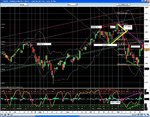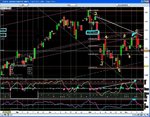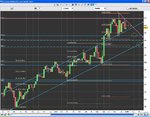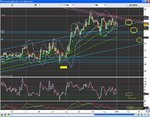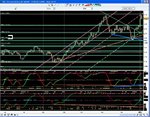Hey fibba,
Very good post by the way.
Do you mind me asking if you spend more time testing out strategies that actually exercising them? 😉
I ask this because I see you refer to 'backtesting' or just 'testing' very frequently on these boards.
Do you find looking at what has happened before and assuming it will happen again (despite the economic climate) successful? I use very little TA in my trading and focus on support/resistance and economics.
This isn't any form of 'dig' at you BTW but I am interested how successful your strategy is (when you get round to placing real trade's that is 😉 )and what instruments you find the most success with?
JK
JK,
If you read my blog (entry number 15) you will see that I have been learning TA for exactly 1 year.
I believe it is entirely normal in a journey of learning a completely new skill, that you will continue to learn new aspects of TA and disregard other areas of TA and different methods through a process of trial and error of what works and what doesn't.
In terms of my strategy. It is entirely technical in nature. I assume that all relevant information is included in the price of a security. I do however, pay attention to econ news announcements and keep an up to date strategic overview of the current market themes (eg "credit crunch", "stagflation", "carry trade", "dollar weakness") so I'm not caught out by any high level decisions.
I've been very fortunate in discovering a method that:
1.Has a positive expectancy based on the sample size and ongoing observations of taking all signals without any filtering. The problem with taking unfiltered signals is that a sequence of losses can occur;
2. Other traders on this forum and on other forums are using their own specially filtered method which also generates a positive expectancy.
I'm testing the method across a selection of instruments and at different intervals and different levels of volatility. The objective is of filtering out the consistently poor signals by the appropriate use of TA techniques including multiple time frame analysis.
The key to the method is the identification and evaluation of the strength of support/resistance levels and of trend just like the other traders I've observed are doing.
I also aim to write a screener and maybe an indicator.
The whole purpose of this filtering is to avoid trading a pretty pattern on its own.
I treat trading as a business and therefore I must be able to understand my product in full. My product is my two trading methods which I take to the "market" to trade with the aim of making net profits with an acceptable degree of risk and loss.

